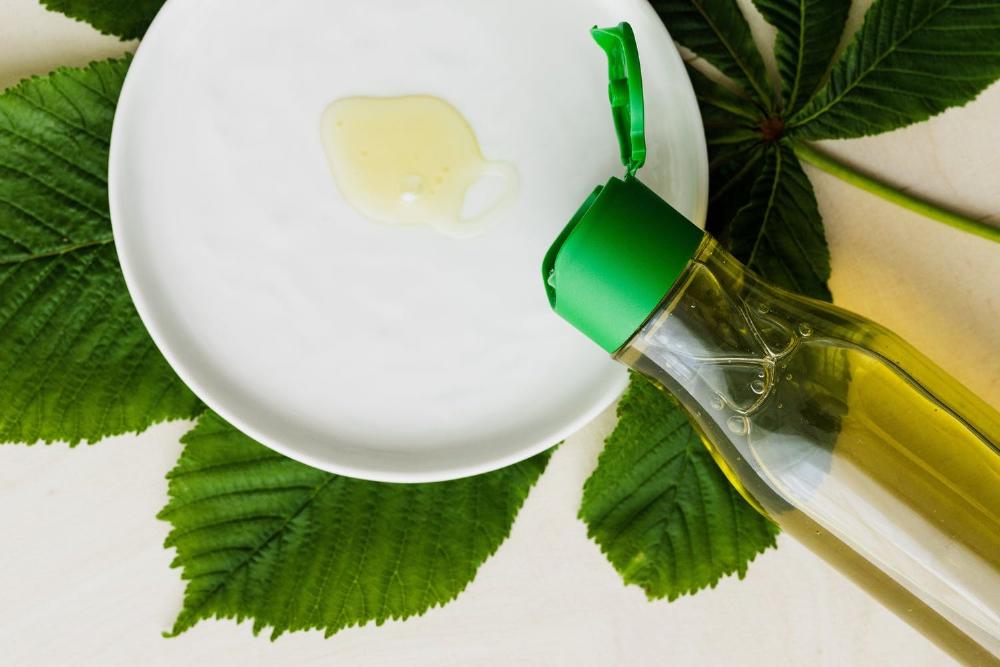
Have you Ever Thought About How Natural your Shampoo is? How to Transition to Natural Shampoo? How long have we used shampoo as a society? The term shampoo entered the English language three centuries ago. It came from India during the colonial era, its roots are from the word "champo" in Hindi that means "to press or knead". The practice of shampooing meant to rub/massage the scalp with fragrant oils. Then it evolved to hair washing as we use it today. But yeah, Indian culture introduces hair washing to their colonizers, and they would return to Europe with the custom, introducing it to European societies. Check this article and you'll find the keys for a Healthy Hair.
Since the custom rooted in Europe, people started using bar soaps containing coconut oil and other natural elements to clean their bodies and hair. So the whole bar shampoo trend, it's actually vintage. In the mid 19th century this was the only way you could buy shampoo, in a solid-bar format.

But what happened? When did we start to use the shampoos we know now?
In the 19th century due to the health crisis, Europe was facing, scientists started developing liquid surfactants to remove dirt efficiently from various surfaces. So of course a few opportunistic cosmetics companies used this new technology to start what is now a billion-dollar industry.
As you can see it had nothing to do with packaging problems, but this was the start- Every lotion that up to this point was an organic mix of oils and fragrances in the form of a solid-bar now was liquid, and therefore needed to have a container. At the same time, plastic was being used as a less expensive and more convenient way form of packaging, making a perfect match for the new liquid products that needed to be packed.
And this is how the single-use/disposable personal care industry began.
Nowadays, an average person goes through 800 plastic shampoo bottles in their lifetime. This is not taking into consideration body lotions, conditioners, and any other self-care product we might use. Most of these bottles sadly end up in land fields or in the oceans where they become microplastics endangering marine life and contaminating our water. Not to mention chemicals that contaminate our bodies and the water.
Let's talk about chemicals though.
Let's call normal shampoo to the one we probably all have in our showers and buy at Target once every few weeks. You probably don't read the ingredients on the label (don't worry I don't read them either). But for the sake of understanding what's the big deal with organic and natural shampoos, let’s take a closer look:
Normal shampoos are made with a lot of artificial ingredients that can irritate and harm your body (therefore the water as well). One ingredient that we will find is SLS or Sodium Lauryl Sulfate. This is responsible for the white, bubbly foam experience you get every time you wash your hair. And who doesn't like some bubbles in the shower, right? But research has showed that this sulfate can cause damage to your skin such as irritation and over sensibility. So if we know this, why is that ingredient still in our products?
Well, the answer is bubbles. Yup. I guess we like bubbles a little too much. Bubbles create a feeling of cleanness. So companies keep using it because we like it, and since we like it, we keep buying it. But scientifically there is nothing about bubbles that make shampoos more efficient at cleaning your hair. It’s just that, a feeling. Sorry guys, natural shampoos do not have bubbles.
Probably you’ve heard of parabens. But what are they? Essentially, parabens are a type of preservative. They prevent the growth of mold and bacteria. This allows products to survive for months, even years. However when you use these products, they can also enter your body through your skin, and that’s not good.
Now let’s talk about organic and natural shampoos.
And yes, there is a difference.

Organic shampoo is essentially extracted from nature, and it does not contain any toxic chemicals, so it won't affect your health. So for a shampoo to be certified as organic, it should be made with ingredients grown without manufactured pesticides, chemicals, artificial fertilizers, genetically modified organisms etc, etc, you get the point. They also may not contain artificial colors, preservatives or chemicals (including sulfates and parabens).
According to the FDA (United States Department of Agriculture), for a product to be in the "100% organic" category, it must contain at least 95% organic ingredients. So not only the final product should be organic but all the ingredients it contains and processing aids must be organic.
So basically an organic shampoo needs to satisfy the standards to qualify as an organic product. But what is the difference between that and a natural shampoo? Because they kind of sound like the same thing, but not really.
You may be also interested at: Organic Soap: The Brand that Leads the Cruelty Free Movement
The term "natural", unlike the term "organic", is not regulated. Any product can be described as natural even if it contains as little as 1% naturally-sourced, plant-based or mineral ingredients and up to 30% synthetic ingredients. And the problem is substances like petroleum, arsenic and mercury are all natural, but that doesn't make them any less harmful that manufactured chemicals.
Luckily, the NPA (Natural Products Association) is certifying brands and ingredients as natural requiring that the products have at least 95% natural sourced ingredients, don't use animals for testing, list all ingredients in the package label, use recycle material on the packaging and contain 100% natural coloring and fragrances. So look up for that seal on the packaging.
So to recap:
Cool.
So now that we learned the difference between chemical, organic and natural let's evaluate our options.
The benefits of picking a natural shampoo are not only good for your hair scalp and body but in addition, you’ll be picking eco-friendly ingredients over chemicals.
Your choice matters, and if you choose to come down this path, remember, no sulfate=no bubbles. But give the natural shampoo a chance, mind their no bubbly rep.

About organic shampoos, you can tell if its organic by the label. And you can also apply these standards for picking one.
These are the essentials for starting your journey for a natural shampoo. I bet later on you are going to be able to narrow even more the search and find the perfect one for your type of hair.
No bubbles!! Sorry, I just can’t stretch it enough. This doesn’t mean it’s not working. It only means there’s no sulfate in it and that it is actually a natural shampoo. And remember, that’s good!
Your hair might take a few washes to adapt. But trust me it will and it’ll be worth it.
Also, it’s convenient to follow the instructions on the label. If it says shampoo twice, do it!
Luckily for us natural and organic shampoos have come a long way. So now you can find the perfect fit for your hair.
Now that we covered the chemical side of the problem, let me introduce you to a great way of reducing plastic usage, buy a shampoo bar.
Shampoo bars are good for all hair types and hair lengths. Most over-the-counter shampoos are 97% water which means it is almost impossible to create an all-natural product and still keep the bacteria and mold out.
So solid shampoo is a great way to tackle the chemical/health issue and the plastic waste issue. No need for chemicals to keep em fresh, no need for plastic for packaging.
Hope this information is helpful and hopefully, you’ll find the perfect natural shampoo for you!